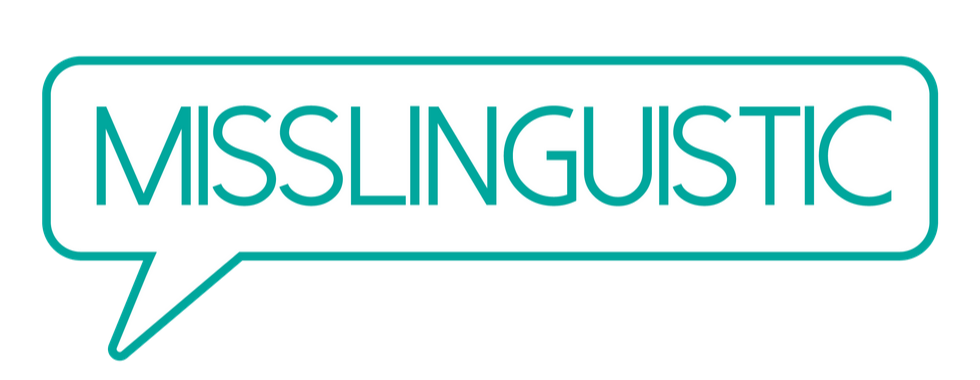A post shared by Sara Maria's Language Diary (@misslingdiary) on
Above: an example of a monologue I memorized in order to improve my ASL.
Recently, I was asked how someone could learn Korean in 15 days.
That was worth a laugh! I’ve been studying Korean for five years, and I’m still far from being able to say I’ve “learned it”. The fastest I have ever reached fluency in any language was in three years (although, since I’ve never studied a language full-time, I could possibly bring that down to a year if I was single-minded about it.)
Of course, when this request came in, I was tempted to shut this person down.
But then I remembered all the times I decided not to pursue a challenge, simply because I knew that I wouldn’t have the time to master an ability, or to get the absolute most out of my efforts.
I’ve since learned that there is a lot of value in dabbling. You can get immeasurable value from 15 days of intense language study, even if you’re not able to master the language. It can completely transform what you get out of a vacation, how well you communicate with a loved one, or how much you can enjoy movies or music.
So instead of telling this person to give up, I told him to manage his expectations.
And then, I told him to streamline his study plan so that he would learn ONLY what he would need and use for his trip to Korea. No cooking vocabulary, no directions (because let’s be honest, we all rely on Google Maps these days) and no complicated grammatical structures.
The absolute most efficient method I have found for cramming a new language is what I’m going to call my Monologue Method.
It is not the most complex method, and it can be downright boring to implement. But you’ll find it incredibly effective if you do it right, and it will make your study plan hyper-efficient: no extraneous grammar patterns, no useless vocabulary. I’ve found it useful both for adding brand new languages to my repertoire, and leveling up in intermediate languages.
Here’s how the monologue method works:
1. First, identify “monologues” or short speeches that you’ll be needing for your specific purposes. For example, a self-introduction. Or the answer to “why are you studying Korean and how long have you been studying it?” Ideally each monologue will be no longer than a minute.
2. Then, write out the monologue with the help of a native-speaker tutor. Make sure that it is not a literal translation of your source language, and that it reads naturally.
3. Have your native-speaker tutor record herself speaking (or signing) on her phone or computer.
4. Load it up on your phone, so that you can watch or listen to it as much as possible, while doing chores, commuting, or waiting in line. I like to use the Tempo app so that I can adjust the speed, in case the rate of speech is too fast for me at first. For a new language, it will usually take me about 50 listens at 60% speed until I can make it to 100%.
5. After you’ve given it a few listens, start trying to “sing along” with the native speaker, matching not only pronunciation but pitch, so that you can learn the natural musicality of the language.
6. Repeat this hundreds of times. This is the hard part! You’ll really need to incorporate this into your routine, so that you can do it enough times, reasonably spaced out so that you don’t drive yourself crazy.
Do this until you have it memorized like a song.
To get to this point, you’ll probably also need to do some more analysis of the monologue with your tutor. Make sure that you don’t start any bad habits when it comes to your pronunciation, and ask your tutor to explain the grammar structures used in the monologue. Recite the monologue for your tutor a few times. Ideally, you’ll recite the monologue for your tutor every few days, with plenty of practice in-between. When you start recognizing that you’re making progress, that your pronunciation is improving and that sentences are rolling off your tongue, this process will start to get much easier, because your motivation will truly kick in!
7. As motivation to truly nail my delivery, I usually post a video of the monologue on social media. This keeps me accountable, gives me a concrete goal to work towards (the desire for praise on social media is a powerful motivator) and also lets me gather feedback from native speakers.
8. Now, the next time your Korean cab driver says, “hey, you have an accent, where are you from?” you can whip out that monologue, and voilá!
You can watch some of my monologue videos below! But first…
Why does this method work so well?
This method leverages different parts of your brain, and creates more neural connections. Have you noticed that you can memorize songs much more quickly than you can lists of presidents?
Partly, this is because by singing along (whether privately or out loud) you are engaging your motor memory. Your motor memory thrives on repetition and gives you a lot of bang for your buck, if you put in the work.
But it is also effective because it creates new neural connections that make the language more retrievable.
Ian Cross, a psychologist studying music and language, says this: “[Music] gives us a hook to hang the words on. We know that if the words don't match with that temporal structure they can't be the right words. So, it kind of narrows down the problem space, narrows down the search space.” Essentially, memorizing the monologue like a song lets you create more connections in your brain so that the words and structures are easier to retrieve.
When you memorize a monologue by listening to it over and over, copying the prosody (musicality) of the pitches at the sentence and dialogue level as if you are singing, you’re engaging the same processes as when you listen to music, and you are making the monologue easier to memorize.
This method focuses only on what you need and will actually use. Since I only memorize monologues that I’m likely to need often, I find that I can still remember monologues I memorized years ago…because I still use them! They’re still getting reinforced.
This method can be used to create new sentences, too! You can use the structures you memorize, sub out certain words, and voila! You’ve put together a novel sentence with minimal effort.
For example, when studying Russian recently, part of my monologue was “I live in Russia with my husband and my dog.”
In Russian, nouns that appear in this kind of “with” construction must be conjugated in a certain way.
But once I memorized this sentence, I realized it was much easier to remember how to say things like “pay with credit card” or “coffee with milk” as well, because these constructions just SOUNDED right, I had already memorized a similar version!
Now that you know why it works, check out some of my monologues! And if you’ve tried out this method, hashtag your Twitter or Instagram posts with #monologuemethod so I can see yours too!
Day 15 of the #30dryc in Indonesian...with subtitles! ?♀️ to catch up. Better late than never! Silahkan koreksi bahasa Indonesia saya! #correctionswelcome #menerimakoreksi A post shared by Sara Maria's Language Diary (@misslingdiary) on
I got Swedish ?? for #langjam! Since we only get four days to study, and this was a pretty crazy weekend for me, I decided to focus on pronunciation of those amazing vowels. As usual, my favorite way to practice pronunciation is to write a short monologue with my tutor, ask her to record it, listen to it over and over until I can almost sing along, and then record it myself. With vowels like these though, I still needed a lot of extra coaching from my @italki tutors to hear distinctions that we don't have in English. If you're Swedish, you can tell my vowels still need a lot of work, but to my naive American ears, I can't believe that it sounds ALMOST LIKE I'M SPEAKING SWEDISH!!! Thank you to my @italki Swedish tutors for your help this weekend! By the way, I put up a blog post about how I studied and what resources I used, link in bio! A post shared by Sara Maria's Language Diary (@misslingdiary) on
Day 3 of the #30dryc ! Mandarin! Another crazy day, just landed at my Hong Kong hotel, so I am sticking with one of my more comfortable languages. Cantonese will have to wait! 哎呀, 我一听到我对话就听见有的我的四声不正确得。这个挑战很有用! A post shared by Sara Maria's Language Diary (@misslingdiary) on
Finally posting Day 19 of the #30DRYC, in which I talk about how to stay motivated in Korean. Honestly (and I'm going to be honest with you guys because I think it is really important for everyone to know that language learning is still a struggle even after you've learned your sixth, and that's okay!) I worked on this monologue for a lot longer than my others because I really wanted to nail certain Korean grammar constructions that are still particularly hard for me and really don't roll off the tongue. In the end, despite recording several takes, I was still stuttering all over the place. You'll notice lots of edits toward the end of the video, because I'm not here to waste your time. I'm also not here to post videos of myself stuttering all over the internet, although I applaud the brave souls that do! Korean is the hardest spoken language I have ever learned (yes, way harder than Mandarin), and I have to be honest, I haven't been the most focused on it precisely for that reason. But I'm not giving up. I've felt this frustration before, with Spanish, then French, then Mandarin. And in all three cases, I eventually had an unexpected breakthrough just when I thought all hope was lost. Slow and steady wins the race! A post shared by Sara Maria's Language Diary (@misslingdiary) on








I’d definitely agree with this method! It’s something I’ve found really useful for short trips and recently got to try it out on a visit to Spain. I had a rough idea of what I’d be doing and where I’d be going and wanted to get around using public transport so I monologued all of the key phrases associated with travel like, “How much is the bus to Mijas” etc. and found I could easily interchange it with other nous as needed like trains and taxis.
The only issue I had was it was often difficult to understand what was being said in response! If the speaker didn’t reply with one of my set phrases I knew I’d have to meet them with a bit of a blank stare! But that’s part of the fun of travel! 🙂
I’d definitely recommend this method for short trips away and getting some practical use out of your learning, or even as a good intro into a language you can use as a stepping stone to learn more, its a great confidence booster!